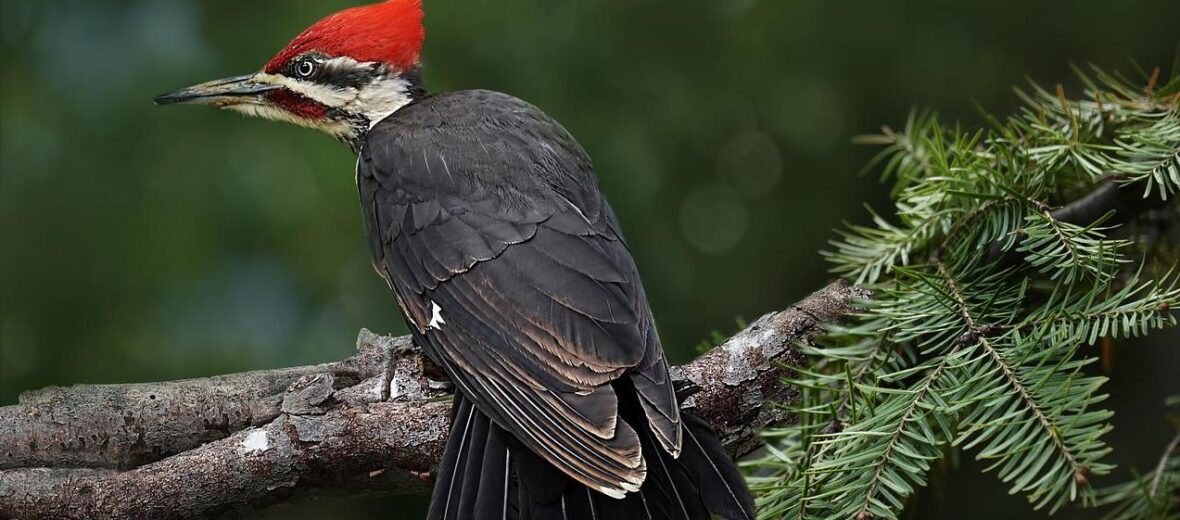
The pileated woodpecker is the largest extant species of woodpecker in Canada and the United States. They can also be found in Mexico. They can be found at elevations of up to 7,546 feet. These birds prefer larger, older hardwood trees and can be seen in large sections of forest habitats. Due to stable and increasing numbers, and a wide-spread distribution, these woodpeckers are listed as Least Concern by the IUCN. This article is on special request from my cousin John.
First the Stats…
Scientific name: Dryocopus pileatus
Weight: Up to 14 ounces
Length: Up to 15 inches
Wingspan: Up to 29 inches
Lifespan: Up to 13 years
Now on to the Facts!
1.) These woodpeckers are tolerant of their own young, for a time, and can often be found in small family groups, called a crown.
2.) Pileated woodpeckers are diurnal (active during the day).
3.) They drum on hollowed out trees to announce their territory, as these trees resonate the loudest sounds.
4.) Carving out rectangular holes is common, as they search for food that they can lap up with their long, sticky tongue.
5.) The pileated woodpecker preys on wood-boring beetle larvae, carpenter ants, and other insects. They will also feed on various berries, fruits, and nuts; even feasting on poison ivy berries.
But wait, there’s more on the pileated woodpecker!
6.) These critters are monogamous (mate for life).
7.) Their nests have several entrance holes.
Did you know…?
The drumming from these birds consists of up to 30 taps in less than a second!
8.) The nest cavity is lined only with wood chips.
9.) Both parents assist in incubation duties.
10.) The male is responsible for creating the nest hole(s) and this nest attracts a female.
But wait, there’s still more on the pileated woodpecker!
11.) Females lay up to 5 eggs that hatch in up to 15 days.
12.) The chicks are independent in around 4 months.
13.) The word pileated hails from the Latin “pileatus”, meaning capped and is in reference to their red crest.
14.) Such large holes are made in smaller, older trees, and utility poles, that this can sometimes cause trees and telephone poles to snap in 2.
15.) These woodpeckers are preyed on by hawks and eagles.
Now a Short Pileated Woodpecker Video!
Be sure to share & comment below! Also, check out the Critter Science YouTube channel. Videos added frequently!
Want to suggest a critter for me to write about? Let me know here.



